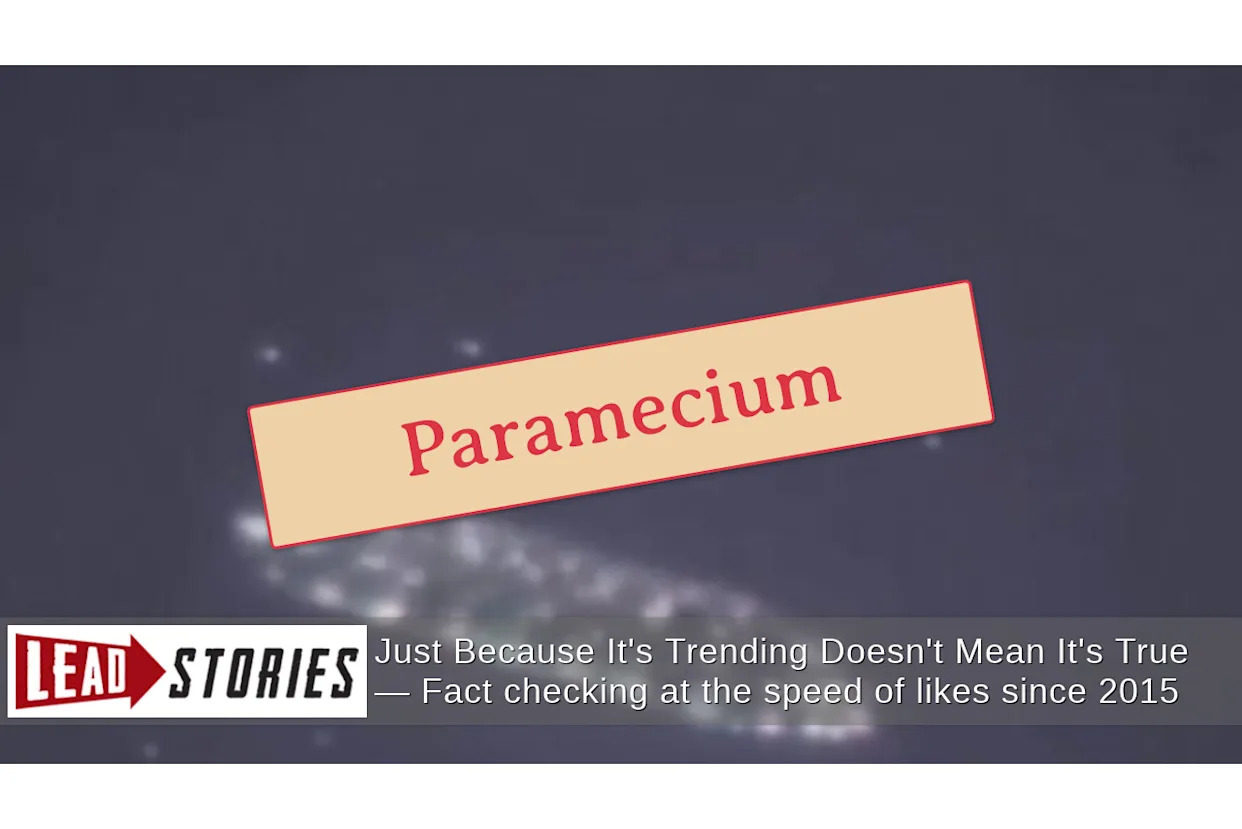Science
Viral Video Misidentified as Comet 3I/ATLAS Revealed as Organism

A video circulating on social media claiming to show footage of the interstellar comet 3I/ATLAS has been confirmed as a misidentification. Instead of a celestial body, the footage features a microscopic single-celled organism known as a paramecium. This misleading video gained traction after being shared on X by the user @BGatesIsaPyscho on October 27, 2025, and has since sparked confusion about its true nature.
The video, which lacks any attribution to a recognized astronomy agency, depicts what appears to be a paramecium, a common freshwater organism. A reverse image search conducted on October 29, 2025, revealed no credible sources to back the claims associated with the video. Notably, even AI-driven search engines mistakenly attributed the video to 3I/ATLAS, indicating a significant spread of misinformation.
To clarify the identity of the organism, Lead Stories reached out to Jack A. Gilbert, a microbiologist at the Scripps Institution of Oceanography at the University of California, San Diego. In an email response dated October 29, 2025, Gilbert stated, “That is a paramecium – freshwater I believe – although better phase contrast, and where it was found, would be ideal for better identification.” His expertise underscores the importance of accurate identification for organisms, especially when misinformation can easily spread online.
The authenticity of the video comes into sharper focus when considering the ongoing updates from credible sources regarding 3I/ATLAS. Currently, the NASA webpage dedicated to the comet’s multimedia content is not being updated due to a lapse in federal government funding. A notice on the site clearly states this situation, leaving a gap in official information about the comet.
In contrast, a recent image released by the National Optical-Infrared Astronomy Research Laboratory (NOIRLab) on September 4, 2025, provides an accurate representation of 3I/ATLAS. Captured with the Gemini Multi-Object Spectrograph at Gemini South in Chile, the image illustrates the comet streaking through a dense field of stars. The colorful streaks observed are a result of the comet’s fixed position relative to the shifting background stars during exposure, demonstrating the scientific rigor involved in capturing astronomical phenomena.
Misinformation regarding astronomical events can be detrimental, as it may lead to public confusion and undermine trust in scientific communications. This incident serves as a reminder of the necessity for critical evaluation of online content and the importance of relying on verified sources for accurate information.
Additional claims and discussions surrounding 3I/ATLAS have been examined by Lead Stories, reinforcing the need for clarity and transparency in the dissemination of scientific information. As we navigate the digital landscape, vigilance against misinformation remains crucial.
-

 Lifestyle3 months ago
Lifestyle3 months agoLibraries Challenge Rising E-Book Costs Amid Growing Demand
-

 Sports3 months ago
Sports3 months agoTyreek Hill Responds to Tua Tagovailoa’s Comments on Team Dynamics
-

 Sports3 months ago
Sports3 months agoLiverpool Secures Agreement to Sign Young Striker Will Wright
-

 Lifestyle3 months ago
Lifestyle3 months agoSave Your Split Tomatoes: Expert Tips for Gardeners
-

 Lifestyle3 months ago
Lifestyle3 months agoPrincess Beatrice’s Daughter Athena Joins Siblings at London Parade
-

 World3 months ago
World3 months agoWinter Storms Lash New South Wales with Snow, Flood Risks
-

 Science3 months ago
Science3 months agoTrump Administration Moves to Repeal Key Climate Regulation
-

 Business3 months ago
Business3 months agoSoFi Technologies Shares Slip 2% Following Insider Stock Sale
-

 Science2 months ago
Science2 months agoSan Francisco Hosts Unique Contest to Identify “Performative Males”
-

 Science3 months ago
Science3 months agoNew Tool Reveals Link Between Horse Coat Condition and Parasites
-

 Sports3 months ago
Sports3 months agoElon Musk Sculpture Travels From Utah to Yosemite National Park
-

 Science3 months ago
Science3 months agoNew Study Confirms Humans Transported Stonehenge Bluestones









